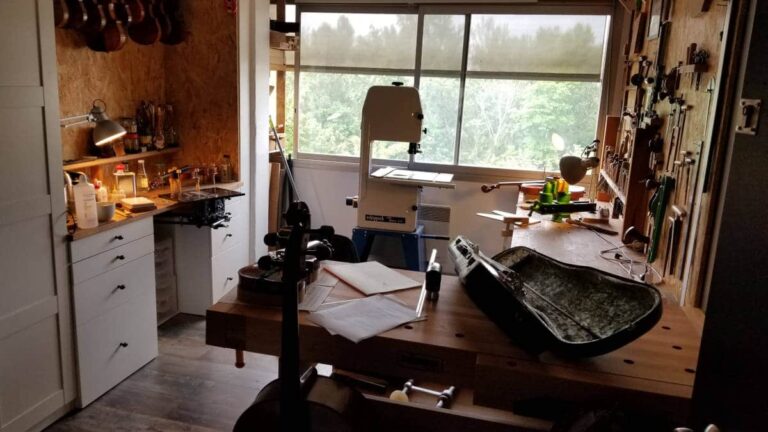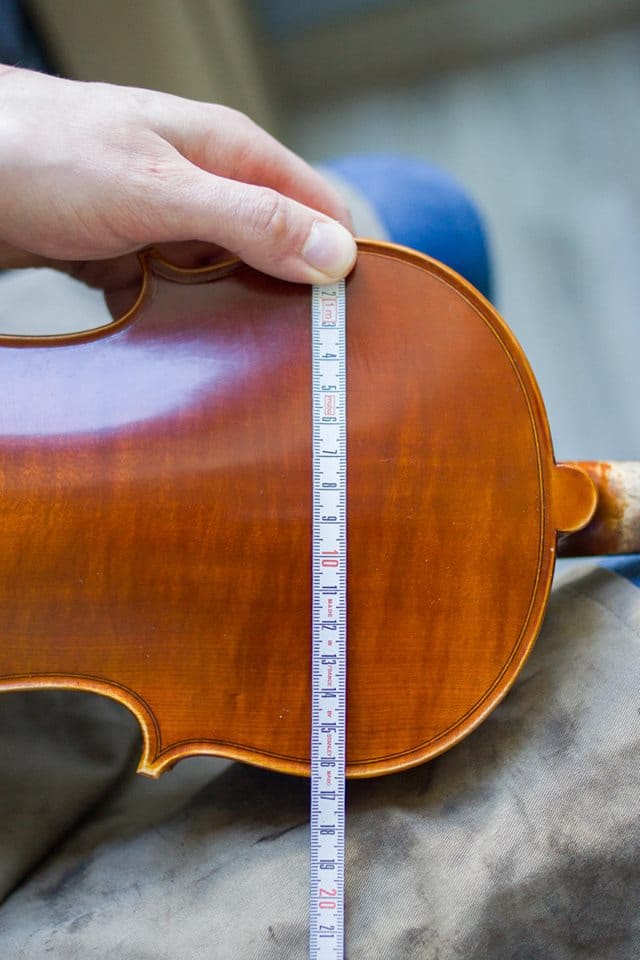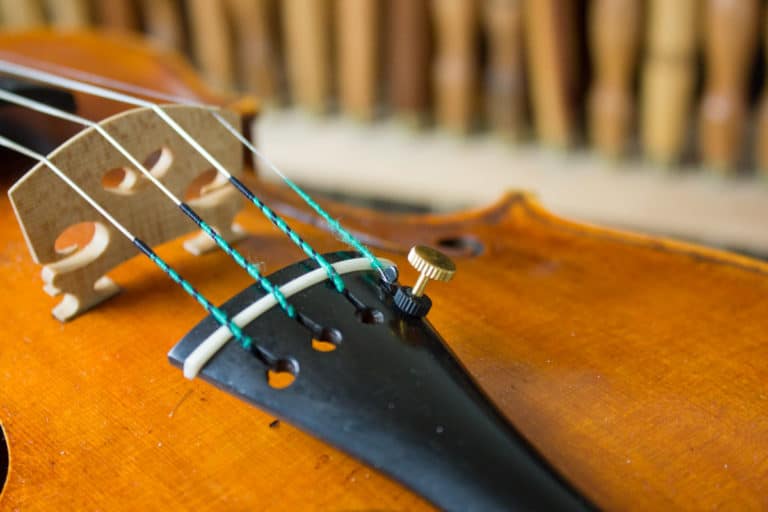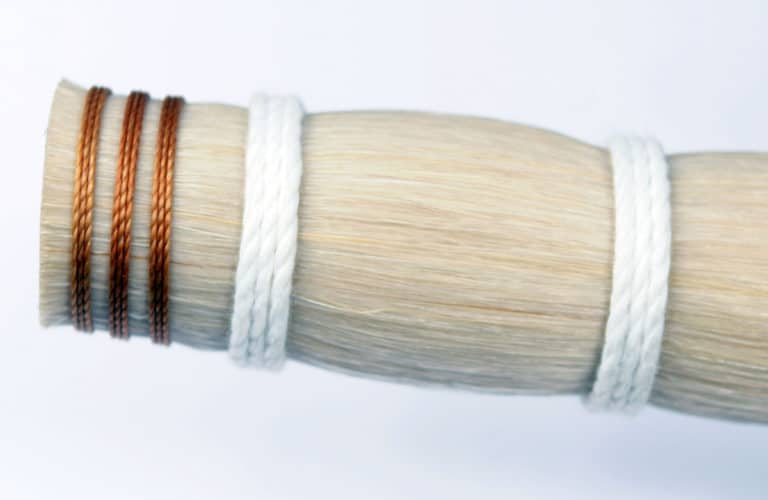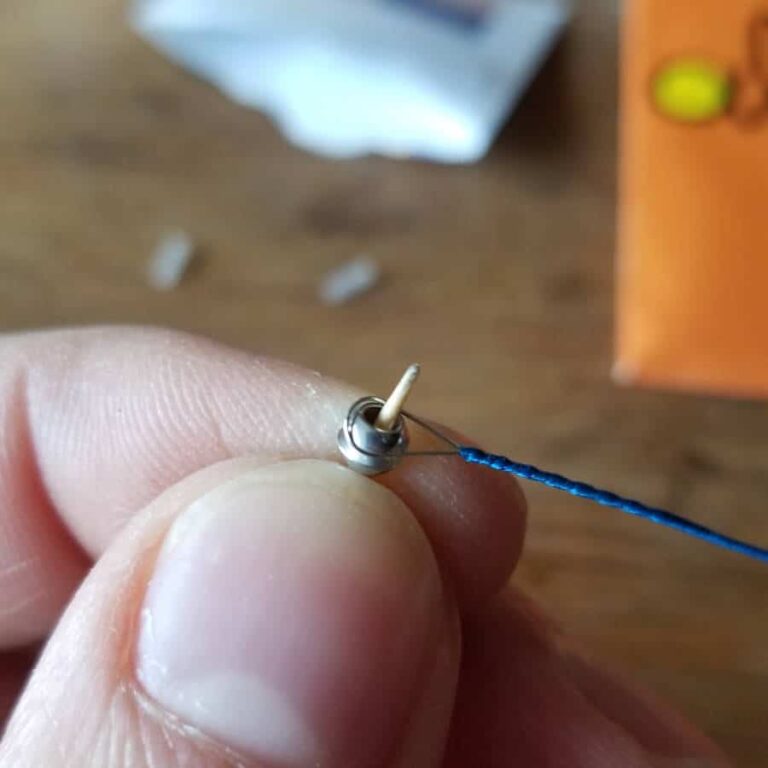Incomparable tone and playability come first and foremost from the violin bridge. It transmits the vibration of the strings directly to the resonance box, amplifying the sound. It's also where you can control the vast majority of parameters. From comfort and playability to tone.
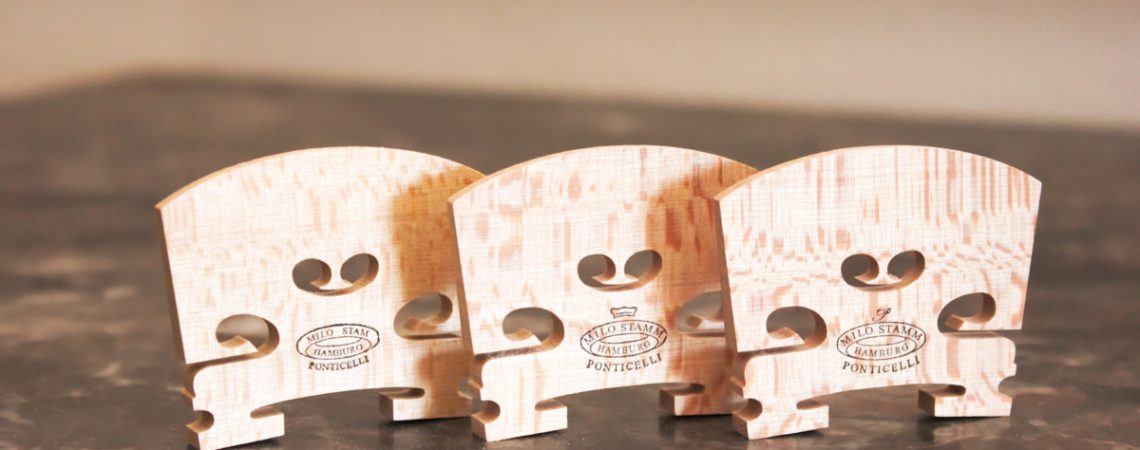
The violin bridge and bowed string instruments
Bridge position
The bridge is a maple piece positioned perpendicular to the strings. It takes the tension of the strings(about 14kg on a violin) and distributes it over the soundboard. Each of its legs has a very precise position that determines not only the way the instrument vibrates, but also its stability over time...
- On the bass side, the soundpost supports the tension of the strings. The bridge foot rests directly on it.
- On the other side, under the treble, thecore provides arch support. It sits slightly behind the foot. Its position and tension also have a major influence on the instrument's timbre and the balance of sound between the strings.
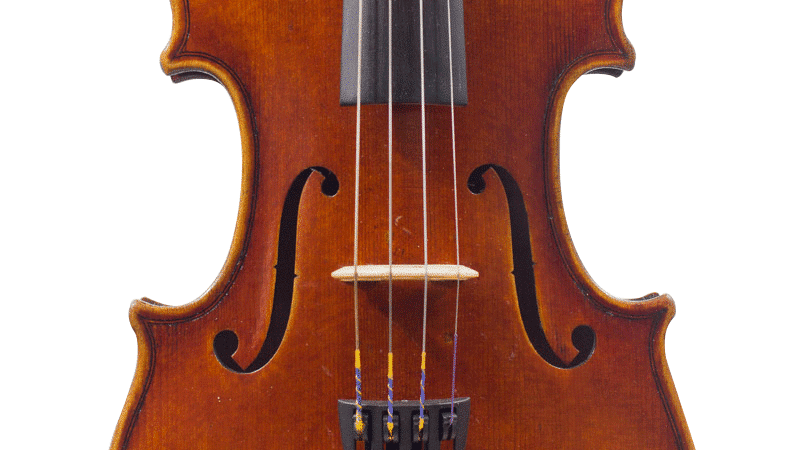
The violin bridge at the musician's service
In addition to serving as a means of transmitting vibrations, the bridge of a violin, viola or cello is also a means of controlling the musician's playing. In fact, thanks to its height, the shape of its curve and the distance between the different notches of the string passages, the luthier adjusts all the factors of comfort and playability of the instrument.
- String height is controlled by the bridge. We can thus choose to move them closer or further away from the fingerboard to make playing comfortable, while controlling the resistance of the strings. It's even possible to play with the inclination to raise a string individually.
- A more rounded curve makes it easier to play individual strings. This is primarily the choice of beginners. Advanced players, on the other hand, generally prefer a flatter bridge, enabling them to make faster transitions between strings.
- A more pronounced spacing between each string will also make it possible to adapt to the musician's choices.
Violin bridge problems
Although it may seem the opposite, the bridge is not a glued part. It can therefore be easily moved, adjusted or repositioned, which is as much an advantage as a disadvantage. It is important to keep the violin bridge in its original position as much as possible. This is to avoid the many problems that can arise:
- First of all, the bridge must be positioned correctly at all times. It should be upright on the table, with the feet in contact with the surface.
- The next thing to watch out for is worn string passages. Not only can they create stray vibrations, but they can also interfere with the proper vibration of the string.
- Finally, when changing strings, it's best to replace them one by one. This preserves maximum tension and prevents the bridge from shifting.
[blog_posts items="1″ orderby="date " ids="9299″]
Easel manufacturers
Bridges are very rarely made by luthiers themselves. Although some do produce their own innovative models. The vast majority of bridges used in daily life come from specialized manufacturers. They mass-produce bridges of various qualities and sizes for all instruments. They include DespiauTeller, Aubert or Milo Stamm (I use several of them in the workshop).
It's also worth mentioning that each bridge must be completely reworked by the luthier before it can be installed. So don't expect to buy a ready-to-use bridge that installs itself on the instrument. Even if you can find some on the Internet...
Violin assembly and adjustment
If you're unhappy with the performance of your violin, there's probably a solution. A few adjustments can significantly change its character. You might even rediscover your instrument completely. Don't hesitate to experiment with the different possibilities. And if you need any help in this process, please don't hesitate to contact me.
When should I change my violin bridge?
Sometimes a violin bridge needs changing. This is a common part of instrument maintenance. Here are a few criteria to help you identify a bridge that needs changing.
- The bridge is no longer straight, but seems to be bent forward or backward.
- The strings have dug too deeply into the bridge, which can lead to stray vibrations or a muffled sound.
- The bridge is unstably balanced and frequently falls over.
You don't have to achieve these results to change your violin bridge. As a general rule, a bridge should be changed every 10 to 15 years, to match the sound of the instrument to the musician's wishes. It is also necessary to replace a bridge that dries out and oxidizes over time, resulting in a much colder sound.
Similarly, if you buy a new violin, it's likely that a new bridge will have to be made to your own specifications.
[blog_posts items="1″ orderby="date " ids="1915″]

